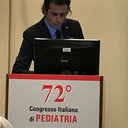Senile anorexia in different geriatric settings in Italy.
Açar sözlər
Mücərrəd
OBJECTIVE
Anorexia is the most frequent modification of eating habits in old age, which may lead to malnutrition and consequent morbidity and mortality in older adults. We aimed to estimate the prevalence and factors associated to anorexia in a sample of Italian older persons living in different settings. Our secondary aim was to evaluate the impact of senile anorexia on nutritional status and on eating habits, as well as on functional status.
METHODS
Observational study in nursing homes, in rehabilitation and acute geriatric wards, and in the community in four Italian regions (Lazio, Sicily, Emilia-Romagna, and Veneto).
METHODS
526 over 65 years old participants were recruited; 218 free-living subjects, 213 from nursing homes, and 96 patients from rehabilitation and acute geriatric wards in the context of a National Research Project (PRIN) from the Italian Ministry of Instruction, University and Research (2005-067913 "Cause e Prevalenza dell'Anoressia senile").
METHODS
Anthropometric and nutritional evaluation, olfactory, chewing, and swallowing capacity, food preferences, cognitive function, functional status, depression, quality of life, social aspects, prescribed drugs, and evaluation of gastrointestinal symptoms and pain. Laboratory parameters included prealbumin, albumin, transferrin, C-reactive protein, mucoprotein, lymphocyte count, as well as neurotransmitters leptin, and ghrelin. Anorexia was considered as ≥50% reduction in food intake vs. a standard meal (using 3-day "Club Francophone de Gériatrie et Nutrition" form), in absence of oral disorders preventing mastication.
RESULTS
The overall prevalence of anorexia was 21.2% with higher values among hospitalized patients (34.1% women and 27.2% men in long-term facilities; 33.3% women and 26.7% men in rehabilitation and geriatric wards; 3.3% women and 11.3% men living in the community) and in the oldest persons. Anorexic subjects were significantly less self-sufficient and presented more often a compromised nutritional and cognitive status. Diet composition analyses of anorexic older adults revealed a lower intake of all food groups and a general tendency to a monotonous diet.
CONCLUSIONS
Anorexia is a frequent condition in older Italians, particularly those hospitalized, with important consequences in the nutritional and functional status. The analysis of dietary components and its quality along with the frequency of intake of single food groups may be useful to plan intervention strategies aiming to improve the nutritional and health status of older adults with anorexia. An early detection of anorexia followed by an adequate intervention in older hospitalized patients to avoid further worsening of clinical and functional status is warranted.



